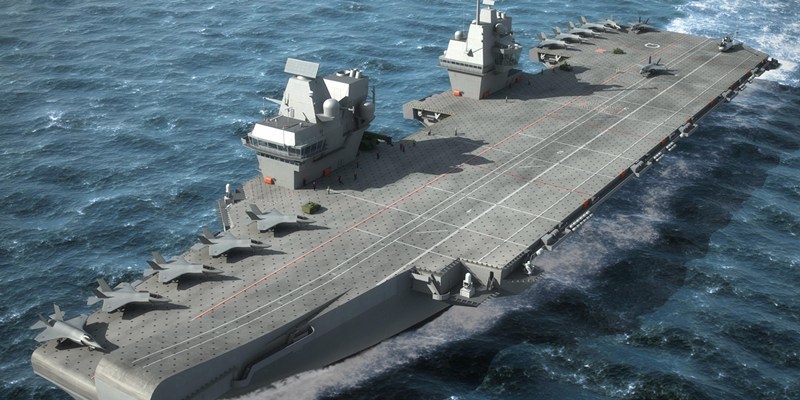The cost of the Royal Navy’s two new aircraft carriers, which will involve work at Rosyth, could escalate to around £7 billion.
While the Ministry of Defence said that final costs have not been agreed, it is understood that the rise in cost is mainly due to the carriers being redesigned to take the US Navy’s version of the Joint Strike Fighter.
However, an MoD source told The Courier that the cost will increase by an estimated £1 billion.
HMS Queen Elizabeth and HMS Prince of Wales are being built by the Aircraft Carrier Alliance, which consists of BAE Systems, Babcock and Thales, as part of a £5.2 billion contract.
However, it is thought this could even rise to closer to £7 billion as a result of the redesign.
Last night an MoD spokesperson said, “We announced in the strategic defence review last year that the design of the new carriers would be changed to accommodate the Joint Strike Fighter jet, which is cheaper to buy, carries a greater payload and has a longer range.
“This will give our new carriers, which will be in service for 50 years, greater capability and partnership with our allies.
“Final costs have not been agreed and detailed work is ongoing.”Goliath craneIt is understood that, to accommodate the US jets, the carriers will need to be fitted with catapults and traps instead of ramps.
The two carriers will replace the Invincible-class aircraft carriers HMS Invincible, HMS Illustrious and HMS Ark Royal.
There was relief for Babcock’s workforce in Rosyth in October, when the UK Government announced that it would in fact go ahead with the building of the aircraft carriers.
Many people feared the worst before the outcome of the strategic defence review, with some thinking that the carriers contract would be axed or reduced.
However, a month later, it became clear that Prime Minister David Cameron was warned that cancelling one of the navy’s aircraft carriers would have cost as much as going ahead with both ships.
Rosyth is set to play a major role in the construction of both carriers and a giant 1000-tonne crane, which was transported up the Firth of Forth last month, could provide an important tool in the work.
